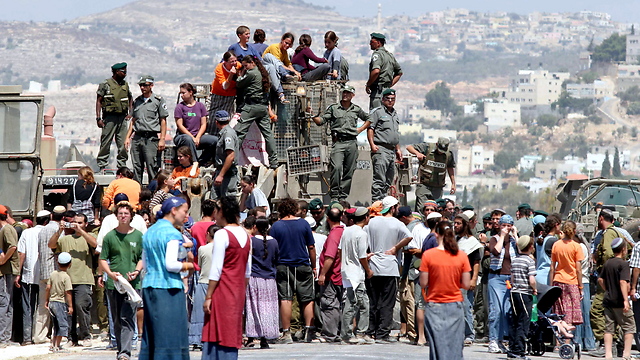
Looking back, Gaza pullout was a mistake
Op-ed: Had Israel remained in Gaza, the economic gap between the Palestinians in the strip and in the West Bank would have been narrowed, the PA would have maintained its rule, tens of thousands of Gazans would be working in Israel and the level of violence would have dropped.
Gaza isn’t controlled by the Palestinian Authority, as the supporters of the disengagement—myself included—expected. Gaza was basically handed over to Hamas, which failed to establish a civilian government there. Instead, it established a wild military regime seeking conflicts and lacking any civilian goals. Israel, for its part, tried to rid itself of Gaza, suffocate it and hand it over to Egyptian responsibility.
At the end of the day, neither option was implemented: Gaza is stuck in our throats, today more than ever. The conflict isn’t over. It has worsened, and it likely won’t end on its own.
The disengagement wasn’t an initiative of the “peace camp”; it was the personal initiative of late Prime Minister Ariel Sharon. On paper, it seemed like the right solution—the beginning of a process to end the occupation. That’s how it was presented by Sharon too.
But immediately after Israel pulled out of there, it turned out the strip wouldn’t be like Singapore—but rather like Benghazi. The Hamas militias had no interest in an organized transfer of the production and real estate assets Israel had left behind. They preferred to build training camps in greenhouses than grow tomatoes there. And the PA vanished from the area. That sealed the enclave’s fate.
The economic, social and security situation in Gaza has deteriorated in the years that have passed since the disengagement: Thousands of Gazans have been killed in three wars against Israel, tens of thousands have been wounded, and an unknown number have died due to lack of water, electricity and basic medical services. On the Israeli side, many soldiers and civilians have been killed, communities have been damaged and billions have been invested in fortification and in protecting the border.
Our siege worsened the crisis in the strip but didn’t create it. It was created by the fact that the Gazans’ fate was placed—or rather deserted—in the hands of a cruel, violent, illegal and incompetent Islamic terror organization, which was unprepared to rule as a responsible government. Nevertheless, many Israelis, including senior IDF officers, saw it as the lesser of two evils. So did many European and Arab politicians, who didn’t lift a finger to loosen its grip.
Now, tens of thousands of Gazans are protesting under slogans that not a single Israeli can accept or identify with. They’re not protesting against the occupation, against the siege or against the US Embassy’s move to Jerusalem, as the Western media are wrongly reporting; they are protesting against the actual existence of a Jewish state. And we are responding with cruel live fire. We are firing without crying. They are dying without crying. They have nothing to lose apart from a miserable and hopeless existence. It’s a terrible reality. And the hatred is breaking new records.

Looking back, the disengagement was a mistake. I admit I was wrong to support it, although I had my reservations. Had Israel remained in Gaza, the economic gap between the Palestinians in the strip and the Palestinians in the West Bank would have been narrowed, and a solution would have been found for the transfer of goods and people between Gaza and Hebron. The PA would have maintained its rule—and would have even grown stronger. Tens of thousands of Gazans would be working in Israel, as they did in the past, and the level of violence would have dropped.
What now? Israel won’t reoccupy Gaza, but Israel can serve as a critical element in jumpstarting an international move to free the strip of Hamas and restore the PA's rule. We must, therefore, turn to the Arab League and the European Union countries immediately and call for a comprehensive initiative that would include ending the siege, disarming Hamas, opening the crossings between Gaza and Egypt and bringing the PA back to the strip as the only legitimate government.
Because as long as Israel continues the siege, as long as Hamas continues the terror regime, as long as Egypt remains indifferent and the PA keeps enjoying the bloodshed, no one will be willing to invest the billions of dollars needed to reconstruct Gaza—critical investments which will open a window of hope for the strip’s residents, slightly ease their despair and cool the boiling atmosphere. The vicious circle of bloodshed won’t stop turning on its own. On the contrary, its rounds will only hasten and become more frequent—and more disastrous.











